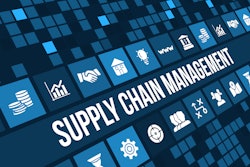
Retail has always been about one critical promise: having the right product, in the right place, at the right time. Yet, for decades, retailers have treated the two most critical levers of inventory management—allocation (initial distribution of stock) and replenishment (ongoing restocking decisions)—as separate, siloed processes.
In today’s fast-moving market, where consumer demand shifts by the hour and supply chains are under constant pressure, this divide means lost opportunities, out-of-stock shelves, and inefficient working capital. Enter AI, ML, and Generative AI (GenAI), technologies that are finally bringing allocation and replenishment together into one cohesive, dynamic strategy.
For example, one retailer uses algorithms to tailor store assortments based on regional preferences and climate. ML models analyze purchase patterns, returns, and even fashion trends on social media to determine what clothes to stock, where, and when. The result is: shorter product cycles, higher conversion rates, and reduced overstock in slow-moving items.
The choices for how to allocate and replenish are heavily influenced by the nature of the products within the assortment. Some of the parameters to look at would be:
- Product type: The type of product dictates the appropriate A&R approach. In my experience, the best practice involves triaging product types to make informed decisions on their A&R
- Lead times and supply flexibility: Longer supplier lead times typically drive heavier initial allocations to avoid stockouts, whereas short lead times or flexible suppliers allow for lighter allocations with frequent, demand-driven replenishment cycles.
- Margin structure and inventory carrying costs: High-margin items may justify more aggressive allocation strategies and higher service levels
P.S. Consider the item lifecycle and availability too: The fulfillment strategy for a product may change over its lifecycle. For example, a product initially planned for a short run might become a longer-term item, requiring a shift from a push to a pull fulfillment approach as demand becomes clear.
Areas of AI/ML in replenishment and assortment
If we look at the current AI and ML technologies and their growth; we see a fundamental shift from old school backward-looking systems that primarily relied on historical sales data (e.g., looking at the last 10 weeks to project future sales using simple formulas). Now we’re talking about:
- Creating "demand signals" that provide a forward-looking view of what is expected to sell
- Advanced forecasting models are capable of intelligently handling "bad" sales history, such as gaps, lost sales, or unreliable spikes (things like Covid)
- Knowledge graphs for incorporating weather and local events into store-SKU level forecasting for replenishment adjustments
- Multi-agent AI system tracking social media and search trends for tracking everything – from generating product concept to their reception
- Analyzing demand patterns and reorder rates to automatically position items for fastest pick/pack time
- Optimizing costs, balancing stock availability with logistics, warehousing, and markdown risks.
In essence, AI, ML, and data analytics empower retailers to move from reactive, historical-based A&R to a proactive, forward-looking strategy, enabling them to position the right products in the right place at the right time.
How to get started: A practical timeline
As obvious as it sounds, clean data, including master data management (MDM) and product information management (PIM), and a well-structured hierarchy are critical. This hierarchy should reflect how customers shop and support the ability to generate demand forecasts at various levels of granularity, down to individual items and locations. This is where Stage 0 should be. Without the right clean data nothing starts!
After clean data, start here:
- Business foundation (Weeks 1-2): Define clear KPIs (forecast accuracy, inventory turns, service levels), select pilot scope (specific categories/stores), and establish cross-functional team with executive sponsorship. Map current state processes and identify quick win opportunities.
- Core AI engine setup (Weeks 3-8): Deploy ensemble ML models for demand forecasting, configure automated replenishment algorithms with dynamic safety stocks, and integrate real-time data feeds (POS, weather, promotions). Focus on store-SKU level predictions with external factor integration.
- System integration and automation (Weeks 9-12): Connect to ERP/POS/WMS systems via APIs, implement automated order generation with exception-based alerts, and configure business rules for approval workflows. Enable real-time inventory visibility across the network.
- Pilot launch and optimization (Weeks 12-18): Deploy to limited scope with continuous monitoring, achieve 15-30% forecast accuracy improvement and 10-20% inventory turn increase. Gather user feedback, fine-tune algorithms, and establish performance dashboards for management.
- Scale and advanced features (Weeks 18 onwards): Roll out to full network, implement agentic AI for autonomous decisions, add cross-category optimization and promotional planning automation. Establish a center of excellence (COE) for continuous improvement and future enhancements.
The GenAI advantage in retail
While traditional ML focuses on numeric prediction, Generative AI is opening up new frontiers. Retailers such as ASOS and Wayfair are increasingly leveraging Generative AI (GenAI) technologies, like GPT models, to automate the creation of product descriptions. These AI systems can generate SEO-optimized content that helps improve search visibility, while also tailoring messaging to resonate with different customer segments or buyer personas. Additionally, GenAI can translate product descriptions into multiple languages with cultural nuance, ensuring consistency and relevance across global markets. This approach significantly reduces the manual effort involved in content creation and accelerates time-to-market for new SKUs, enabling retailers to keep pace with fast-moving consumer demand.
Yet the true promise of GenAI lies beyond efficiency.
· Natural conversation with data: Imagine every planner or executive conversing with their business as intuitively as with a colleague asking questions like, “Where are we most at risk of stockouts next week?” and receiving an answer that is clear, contextual, and immediately actionable.
· Scenario simulation: Retailers can move from hindsight to foresight, running limitless “what if” scenarios; whether a viral product surge, a geopolitical shock, or a vendor disruption; and instantly visualizing the ripple effects across stores, supply chains, and channels.
· Human-centric decision support: GenAI does not replace human judgment; it augments/ amplifies it. By transforming overwhelming complexity into clarity, it empowers decision-makers to anticipate rather than react, to innovate rather than simply optimize.
GenAI is not just another layer of retail technology, it is a catalyst for a more adaptive, intelligent, and human-centered retail ecosystem. Those who harness it today will define the competitive playbook of tomorrow.
While AI and ML enable scalability and precision, human judgment remains essential, especially in interpreting nuanced consumer behavior, managing vendor relationships, and steering brand strategy. The best retail transformations will combine algorithmic intelligence with human intuition.
The era of treating allocation and replenishment as independent levers is over. By unifying both through the power of AI, ML, and GenAI, retailers are building supply chains that don’t just respond to the market; they anticipate it.
The outcome is profound: fewer lost sales, less waste, and more satisfied customers. For retailers, that’s not just operational excellence, it’s a blueprint for long-term competitiveness.


















![Pros To Know 2026 [color]](https://img.sdcexec.com/mindful/acbm/workspaces/default/uploads/2025/08/prostoknow-2026-color.mduFvhpgMk.png?ar=16%3A9&auto=format%2Ccompress&bg=fff&fill-color=fff&fit=fill&h=135&q=70&w=240)